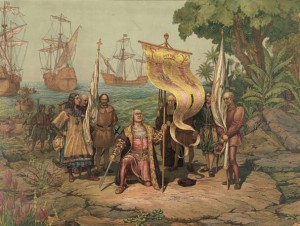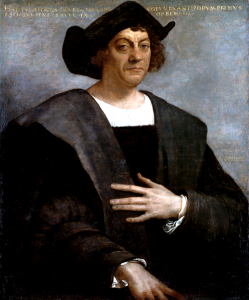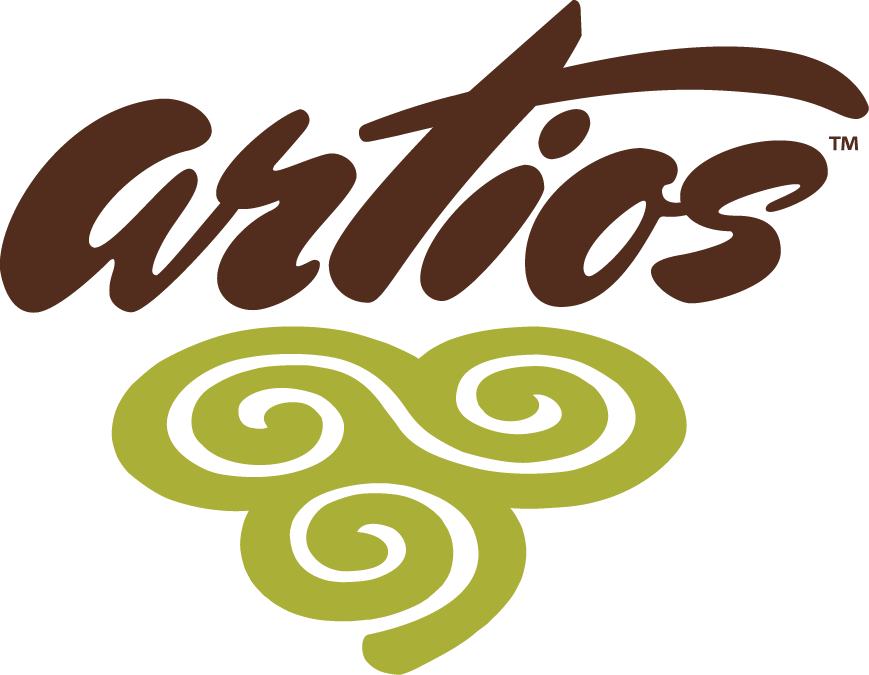[precontent]
[one_third]
Unit 1: The Discovery of America
[/one_third]
[two_third_last]

[/two_third_last]
[/precontent]
[three_fourth]
[box]
[box_header]
Unit 1 [flag bg_color=”#d6e3bc” text_color=”#9d241a”]Elementary[/flag]
[/box_header]
[box_content]
Unit Overview
- Subjects Covered
- Grammar, Literature, Composition, History
- Time Period
- Reformation and Revolutions
- Grade Level
- Elementary: 1 – 5
- Civilization
- Spanish, Native American, English
- Literature
- Robinson Crusoe – by Daniel Defoe
[/box_content]
[box_content]
 Unit Description
Unit Description
To begin the study of early modern history properly, we must study the people involved in, and the events leading up to, the discovery and eventual settlement of the New World. These events and people include Christopher Columbus, John Cabot, and others who courageously set out to explore new lands.
[/box_content]
[box_content]
Leading Ideas and Biblical Principles
[list type=”arrow”]
- History is HIS Story – God’s story of love, mercy, and redemption through Christ.
- He made known to us the mystery of his will according to his good pleasure, which he purposed in Christ, to be put into effect when the times reach their fulfillment—to bring unity to all things in heaven and on earth under Christ. — Ephesians 1:9-10
- God’s providential hand governs and times all events and provides for His Creation according to His plan and purposes.
- The God who made the world and everything in it is the Lord of heaven and earth and does not live in temples built by human hands. And he is not served by human hands, as if he needed anything. Rather, he himself gives everyone life and breath and everything else. From one man he made all the nations, that they should inhabit the whole earth; and he marked out their appointed times in history and the boundaries of their lands. God did this so that they would seek him and perhaps reach out for him and find him, though he is not far from any one of us.- Acts 17: 24 – 27
[/list]
[/box_content]
[/box]
[box]
[box_header]
Unit 1 Resources: [flag bg_color=”#d6e3bc” text_color=”#9d241a”]Elementary[/flag]
[/box_header]
[box_content]
[button id=”1″ link=”https://www.artioshcs.com/wp-content/uploads/2013/07/Early-Mod-Unit-1-Elem-Discovery-of-the-New-World-PRINT.pdf” linking=”new-window” size=”medium” type=”simple” title=”maps”]Download Language Arts Unit 1[/button]
[button id=”1″ link=”https://www.artioshcs.com/wp-content/uploads/2013/07/Early-Mod-Unit-1-Elem-Discovery-of-the-New-World-PRINT.pdf” linking=”new-window” size=”medium” type=”simple” title=”maps”]Download History Unit 1[/button]
[button id=”1″ class=”1″ link=”http://upload.wikimedia.org/wikipedia/commons/thumb/3/38/Viajes_de_colon_en.svg/800px-Viajes_de_colon_en.svg.png” linking=”new-window” size=”medium” type=”simple” title=”maps”]Download Maps[/button]
[button id=”1″ link=”http://www.tripline.net/trip/Columbus’s_First_Voyage-524426755021100398BBC307AA573874″ linking=”new-window” size=”medium” type=”simple” title=”maps”]Interactive Map[/button]
[tabs type=”simple” position=”top-left”]
[tab_title]Lesson One[/tab_title]
[tab_content]
Lesson One Assignments:
- Read the article “A Story of Christopher Columbus for Little Children,” pages 11‑17.
- Define each vocabulary word in the context of the reading, and put the word and its definition in the vocabulary section of your notebook.
- After reading the article, summarize the story you read by either retelling it out loud to your teacher or parent or completing an appropriate notebook page. Either way, be sure to include the answers to the discussion questions and an overview of key people, dates, and events in your summary.
- Examine this picture of Columbus at http://www.loc.gov/pictures/item/2006676658/ and compare it to this picture of Columbus at http://www.loc.gov/pictures/resource/cph.3g04188/
- Focusing primarily on Columbus and the Native Americans, use a Venn diagram to highlight the similarities and differences in the two pictures.
Lesson One Discussion Questions:
- What earlier explorer inspired the imagination of Christopher Columbus?
- What did Christopher Columbus experience and learn at the age of 14?
- What types of things did people believe about the earth and the sea at that time?
- What did Christopher Columbus dream of doing?
- Who did Christopher Columbus ask to help him in this adventure?
- Who finally convinced King Ferdinand and Queen Isabella to help Christopher Columbus with his adventure?
- Why did Queen Isabella listen to Juan Perez when she wouldn’t listen to Columbus?
- What were the names of the three ships Columbus took on his voyage, and which one did he captain?
- How did Columbus encourage and distract his crew on their long journey?
[/tab_content]
[tab_title]Lesson Two[/tab_title]
[tab_content]
Lesson Two Assignments:
- Read the article “John Cabot,” pages 19‑21.
- After reading the article, summarize the story you read by either retelling it out loud to your teacher or parent or completing an appropriate notebook page. Either way, be sure to include the answers to the discussion questions and an overview of key people, dates, and events in your summary.
Lesson Two Discussion Questions:
- Who was King of England when John Cabot wanted to begin his first voyage?
- What is the name of the first land that they saw in the west?
- What did the Cabots bring back to England?
- What part of America did the Cabots explore on their second voyage?
- How did America get its name?
[/tab_content]
[tab_title]Lesson Three[/tab_title]
[tab_content]
Lesson Three Assignments:
- Read the article “Ponce de Leon, Balboa, and De Soto,” pages 23‑24.
- After reading the article, summarize the story you read by either retelling it out loud to your teacher or parent or completing an appropriate notebook page. Either way, be sure to include the answers to the discussion questions and an overview of key people, dates, and events in your summary.
Lesson Three Discussion Questions:
- Who discovered Florida?
- Who discovered the Pacific Ocean?
- Who discovered the Mississippi River?
- What is the oldest U.S. city built by white men?
- What year did men begin to build this city?
[/tab_content]
[tab_title]Language Arts[/tab_title]
[tab_content]
Unit 1 Literature Assignment
- Begin by completing an author profile for Daniel Defoe. You will find an Author Profile page in the resource section. You can find information about the author through various Internet sources. Make sure you get a parent’s permission before accessing the Internet.
- Read Chapters 1 – 6 in Robinson Crusoe (from “I Am Saved from the Sea” through “Getting Food”). If you are using an alternate version of this text, you will want to read roughly one third of the book during this unit.
- As you are discussing these chapters with your family, focus on these questions: Would Robinson Crusoe have been better off listening to his parents’ advice and staying away from the sea? What does the Bible say about respecting your parents?
Unit 1 Composition Assignment
- Print three copies of the Character Template found with the Resources section of the website onto card stock. Cut them out, and then use various art materials to create three shipwrecked sailors. You will be mailing each one of these along with a letter to a friend in a different part of the country.
- Friendly letters are written to share information with people who are familiar to us, such as family or friends. There are five main parts of a friendly letter: heading, greeting, body, closing, and signature.
- Heading: The heading of a friendly letter contains your street address, city, state, zip code,and the date. In some situations it is acceptable to only write the date. It should be in the upper right-hand section of your paper.
- Greeting: This part of a friendly letter usually begins with the word “Dear” and is then followed by the name of the person who you are addressing, ending with a comma. It should be written below the heading, along the left margin of the paper.
- Body: Skip a line after the greeting, and then write the main text of your letter. This is the place where you share all of the things that you want to say with the person to whom you are writing. You’ll want to remember to indent, or leave a short space, at the beginning of each paragraph.
- Closing: Skip another line after the body. The closing of a friendly letter is where you say good-bye. It begins with an expression such as “Love,” “Your friend,” or “Sincerely yours,” with only the first word being capitalized. This should be along the right-hand margin, in line with your heading.
- Signature: The signature is the place where you sign your name, and it should be directly below the closing.
- Write your own friendly letter to three friends who live in a different part of the country. You might want to leave the heading blank, and just make two copies of your letter. In your letter you should
- Introduce your shipwrecked sailor, tell your friend that you are reading about the adventures of Robinson Crusoe, and ask them to take a picture of your sailor having an adventure somewhere exciting around where they live.
- Ask them to either email or mail you the picture, along with some information about the location where they took the photograph.
You will find an example Friendly Letter and an Addressed Envelope Example in the Formats and Models section of the website.
Next, address three envelopes to your friends, using the following parts: address, return address, stamp.
- Address: This is the name and address of the person to whom you are mailing your letter. It should be centered on the front of the envelope.
- Return Address: This is the part of the envelope where you write the sender’s name and address. It belongs in the top, left-hand section of the envelope.
- Stamp: The stamp belongs on the top, right-hand section of the envelope.
- You will find an example of an addressed envelope in the Formats and Models section of the website.
- Now, fold a letter and one of your shipwrecked sailors, and place them in your envelope. As you get pictures and responses back from your friends, keep them for an activity at the end of Unit 4.
Unit 1 Grammar Assignment
- Read the notes on Nouns, beginning on page 8.
- Complete the corresponding exercises on the Artios Home Companion website. These exercises may be printed directly from the Grammar Exercises section of the website.
[/tab_content]
[tab_title]Resources[/tab_title]
[tab_content]
VIDEOS ON THIS WEBSITE SHOULD BE PREVIEWED BY PARENTS BEFORE ALLOWING STUDENTS TO WATCH VIDEOS. SOME VIDEOS MAY CONTAIN INFORMATION ON SENSITIVE TOPICS.
Additional Maps:
- Detailed Map of Early Native American Indian Tribes
- Interactive Map of Early European Explorers 1492-1700
- Map of European Exploration and Land Claims 1488-1610
- Map of Early Voyages of Discovery to the Americas
Explorers:
- John Cabot
- Balboa
- Ponce de Leon
- Captain John Smith
- Captain John Smith Saves Jamestown
- On the Trail of Captain John Smith – Interactive
Videos:
US History Overview – Jamestown to the Civil War
Bon Voyage
The Real Story of Christopher Columbus -(another view of the motivation behind the voyage of Christopher Columbus)
Leif Eriksson vs. Christopher Columbus
Christopher Columbus Sets Sail
Christopher Columbus’s Modern Ships
Ponce De Leon video by the Biography Channel
Rembrandt Van Rijn (1607 – 1675)
[/tab_content]
[tab_title]Arts[/tab_title]
[tab_content]
Albrecht Durer, 1 of 3
Albrecht Durer, 2 of 3
Albrecht Durer, 2 of 3
[/tab_content]
[/tabs]
[/box_content]
[/box]

Leave a Reply
Want to join the discussion?Feel free to contribute!